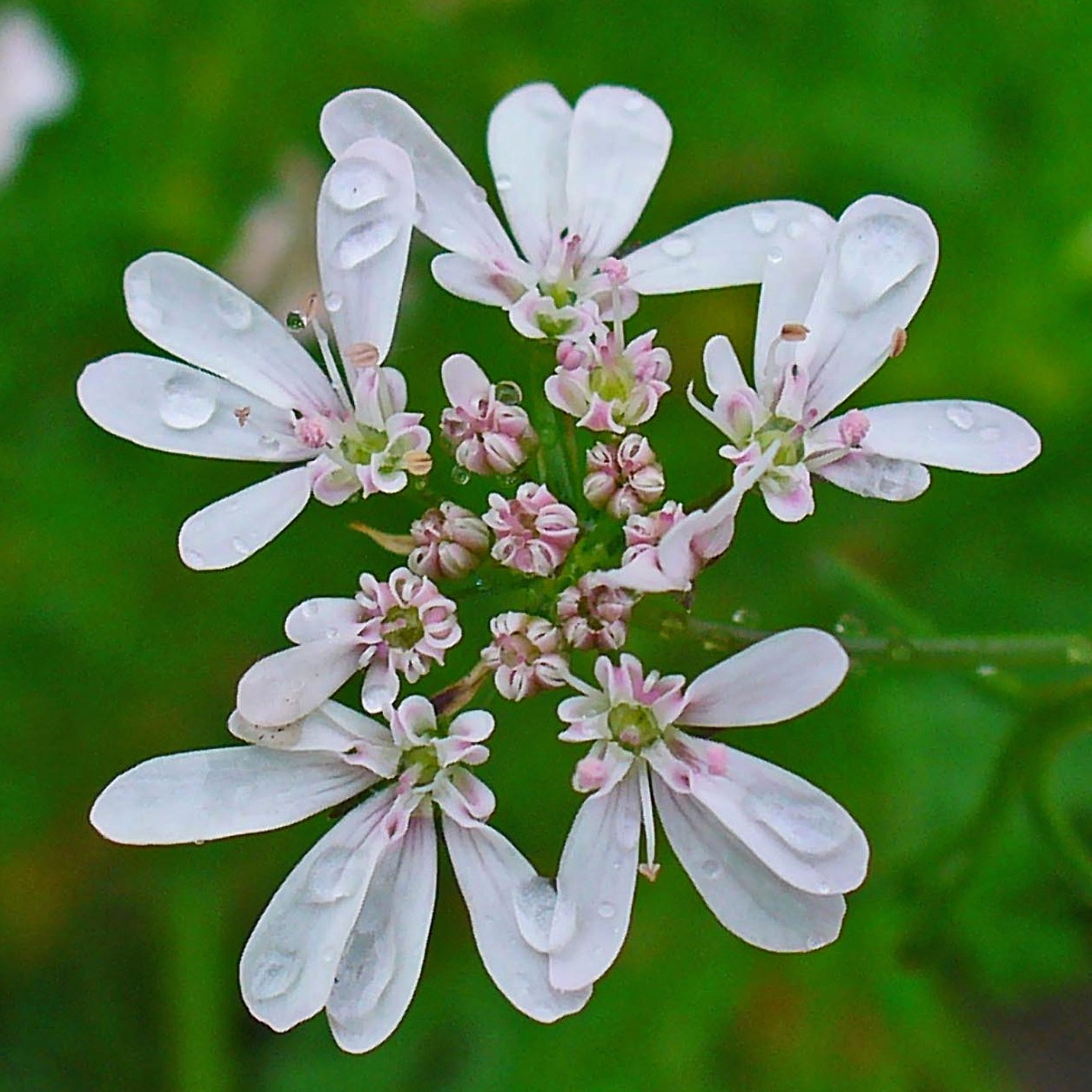Coriander
 Common Names: Chinese parsley, dhania, cilantro
Common Names: Chinese parsley, dhania, cilantro
Scientific Name: Coriandrum sativum.
Climate: Mild at full or partial sun
Plant description: It is a soft herbaceous plant 40 to 70 cm tall with a long thin stem olive green to dark grey color.
Coriander presents two different kind of leaves, the upper ones numerous and separated, and the lower ones that resemble parsley. The lower ones show a fan form and intense green color, as they move up show much more a feathery display. Coriander grows flowers in the summer, they are small, white and resemble an umbrella. The fruit has a soft and spicy scent, containing two seeds.
Coriander is native to Middle East, there are recipes that register its use in Egypt 3,500 years ago.
Cultivation: Coriander doesn’t need special soil, it will grow well in loose and drained soil.
It will grow well in pot around the house, it may even work as pest control since it repels insects.
It should be sown thru seeds directly in the ground, a small stake seems convenient to help it hold the weight. Transplanting is not advised.
The best months for planting are November and December, there should be a distance of 10 cm between plants and 30 to 40 cm between grooves. The depth of the seed should be the double of the seed diameter.
Coriander grows well in shallow soil with few nutrients and organic matter. It actually fancies clayey sandy soils.
 Uses: Coriander is very commonly used in food from Middle East, Asia, Latin America, India and Thailand. All parts of the plant are edible: leaves, flowers, stem, fruits and roots.
Uses: Coriander is very commonly used in food from Middle East, Asia, Latin America, India and Thailand. All parts of the plant are edible: leaves, flowers, stem, fruits and roots.
The seeds can be consumed whole or ground. When they are dried, the flavor is slightly sweet anise-like, and the scent increases with time, therefore it’s recommended to save them for a few months before use.
Coriander is appreciated as a seasoning for salads, sauces, soups, cream, meat and even desserts. It should be consumed fresh because it will loose flavor and scent when heated, besides loosing all it’s nutritional properties.
Coriander has multiple medicinal properties: is beneficial for good digestion, reduces digestion problems including upset stomach, loss of appetite, and intestinal gas. It has antispasmodic, antirheumatic, antibacterial, antifungal, antioxidant, diuretic, purifying, expectorant properties. It is also used for aromatherapy and cosmetic products.
Plagues and diseases: The main problems can be the coriander aphids (Hyadaphis coriandrii) and fungi in case of excessive moisture.
References:
-
Cebrián, J. (2020, June 18). Cilantro. WebConsultas. https://www.webconsultas.com/belleza-y-bienestar/plantas-medicinales/cilantro-que-es-principios-activos-y-nutrientes
-
CILANTRO » PROPIEDADES, BENEFICIOS Y USOS. (2019, January 7). Cilantro. https://www.cilantro10.com/
-
Colaboradores de Wikipedia. (2020, June 28). Coriandrum sativum. Wikipedia, La Enciclopedia Libre. https://es.wikipedia.org/wiki/Coriandrum_sativum
-
Mannise, R. (2020, June 5). Cilantro, usos, beneficios, propiedades, contraindicaciones y más. Ecocosas. https://ecocosas.com/plantas-medicinales/cilantro/
-
R. (2017, March 27). Cilantro. Flores. https://www.flores.ninja/cilantro/
-
Wikipedia contributors. (2020, June 22). Coriander. Wikipedia. https://en.wikipedia.org/wiki/Coriander
En español: Cilantro
